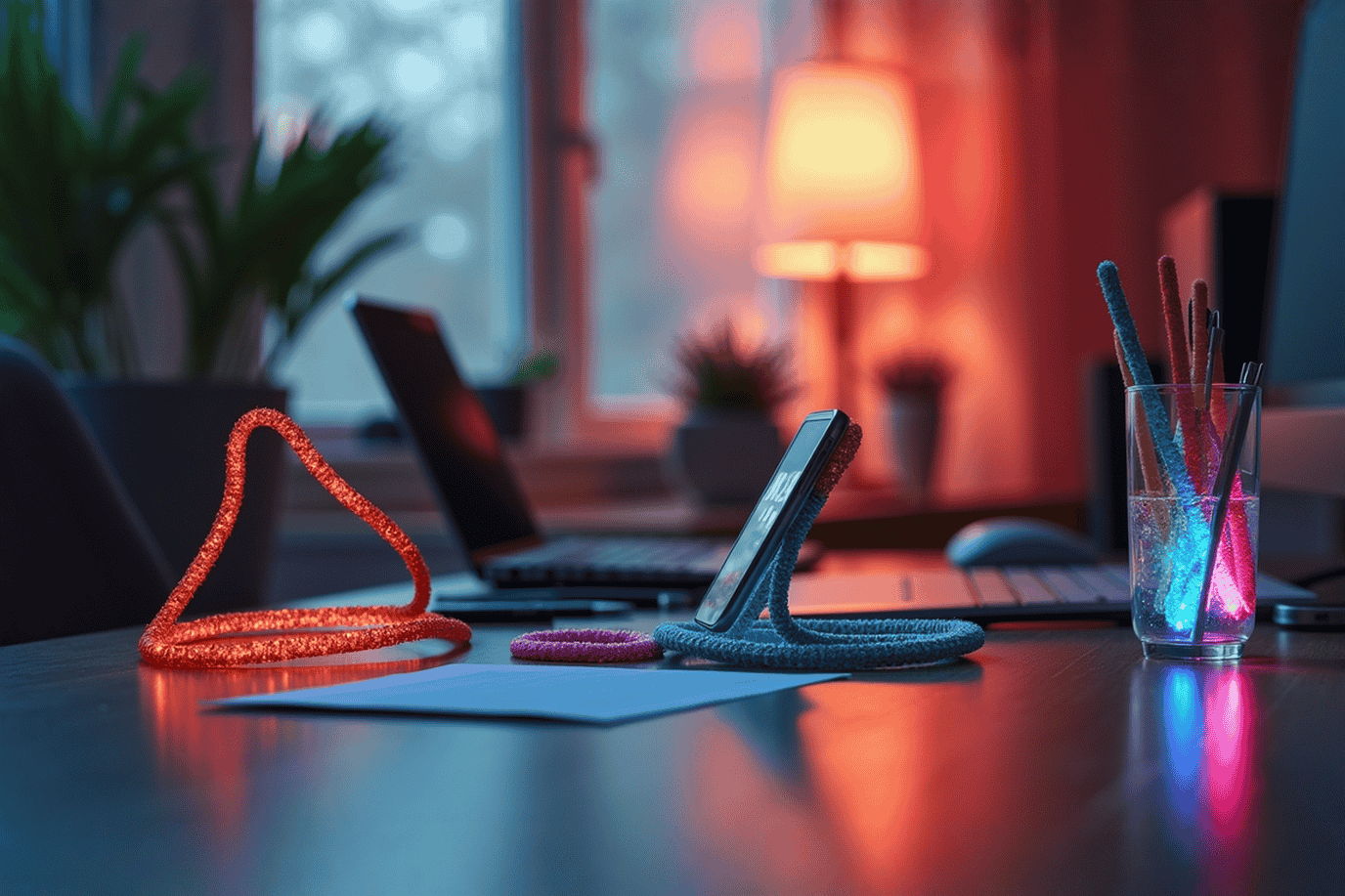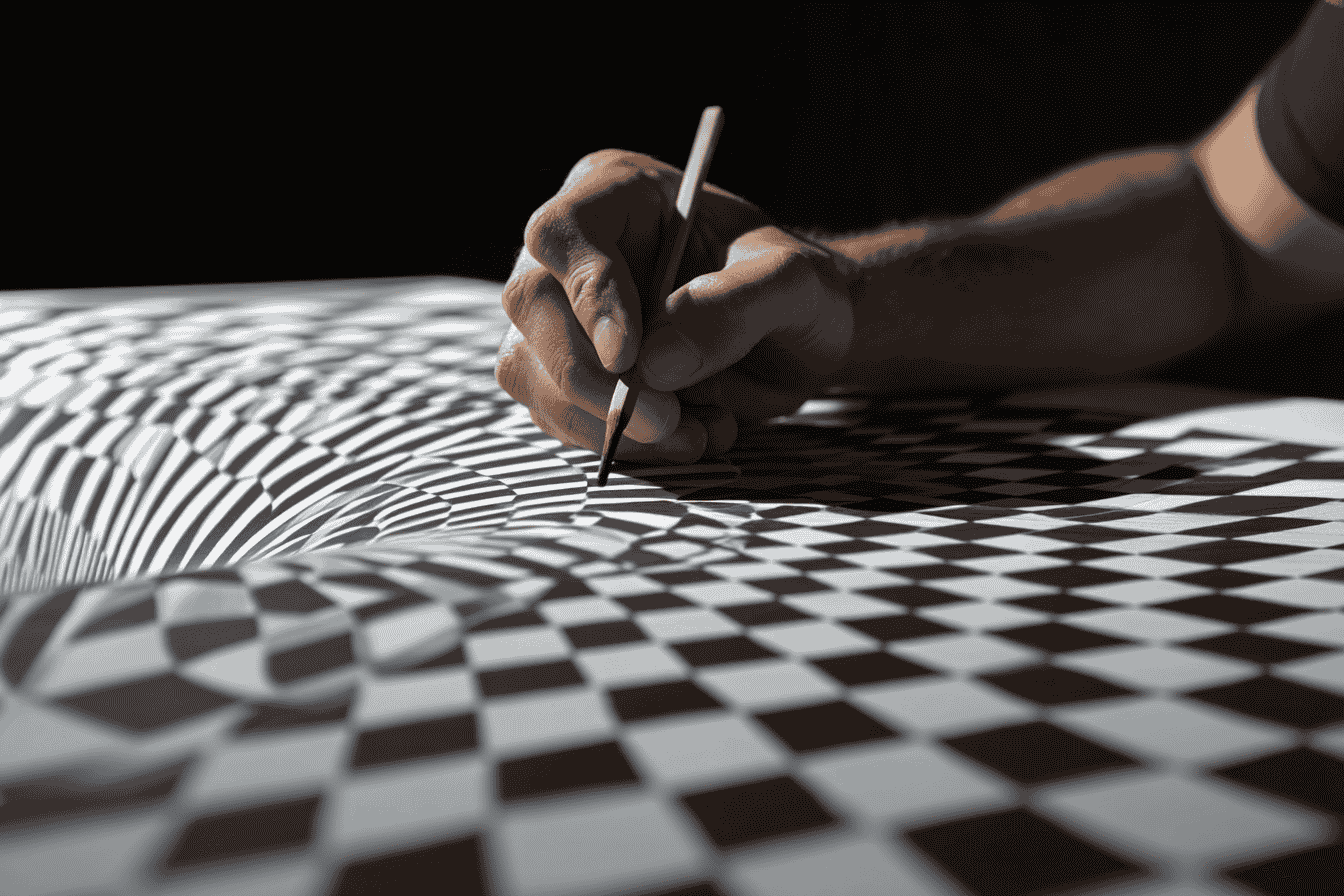This post may contain affiliate links. If you make a purchase through these links, we may earn a commission at no additional cost to you.
In our consumption-driven world, the growing mountains of waste threaten our planet’s delicate ecosystems. Yet within this challenge lies an opportunity for creativity and environmental stewardship through upcycling. Unlike recycling, which breaks down materials for reprocessing, upcycling transforms unwanted items into products of higher value or quality without requiring extensive industrial processes. This creative approach not only diverts waste from landfills but also reduces the demand for new raw materials, decreases energy consumption, and limits carbon emissions.
From glass bottles destined for the trash to discarded wooden pallets, the projects in this guide demonstrate how everyday waste can become functional art, practical home solutions, and conversation-starting decor. Each of these nine remarkable upcycling endeavors offers a unique way to express creativity while making a tangible difference for our environment. Whether you’re a seasoned crafter or a curious beginner, these projects provide accessible entry points into the rewarding world of creative reuse.
Understanding Upcycling: More Than Just Recycling
While recycling remains an essential waste management strategy, upcycling represents an elevated approach to sustainability. When we recycle, materials undergo energy-intensive processes to break them down before manufacturing new products. In contrast, upcycling preserves the integrity of original materials, requiring minimal processing while adding substantial value through creative transformation.
The environmental benefits are significant and measurable. According to research from the Environmental Protection Agency, upcycling can reduce landfill waste by up to 30% in communities where it becomes common practice. Each upcycled item prevents approximately 2.5 kg of carbon dioxide emissions that would otherwise be generated through the production and disposal of conventional products.
Beyond environmental advantages, upcycling creates economic opportunities through reduced household spending, entrepreneurial ventures, and job creation in creative sectors. The global market for upcycled products now exceeds $10 billion annually, with growth rates outpacing many traditional retail segments.
The social dimension of upcycling should not be overlooked. Community upcycling initiatives foster connection, build practical skills, and promote resource awareness. Through shared projects and knowledge exchange, participants develop deeper appreciation for materials and craftsmanship that counters our throwaway culture.
Essential Tools and Materials for Successful Upcycling
Before diving into specific projects, assembling a versatile upcycling toolkit will make your creative journey smoother. Most importantly, these tools help transform discarded items safely and effectively:
A quality multi-tool set forms the foundation of your upcycling arsenal, ideally including various screwdrivers, pliers, wire cutters, and a small hammer. For fabric projects, sharp scissors, needles, and a measuring tape prove indispensable. When working with wood, consider investing in a handsaw, sandpaper of various grits, and a reliable drill with multiple bits.
Finding materials requires developing a new perspective on everyday objects. Begin by surveying your home for items that would otherwise be discarded – empty food containers, worn clothing, broken furniture, and obsolete technology all hold untapped potential. Expand your search to neighborhood cleanup days, thrift stores, construction sites (with permission), and online marketplace free sections.
Safety must remain paramount when working with reclaimed materials. Always wear appropriate protective gear including gloves, eye protection, and masks when cutting, sanding, or using adhesives. Thoroughly clean all materials before use, particularly those that previously contained food or chemicals. When working with electronics, ensure components are completely disconnected from power sources and batteries are properly removed.
Proper preparation techniques extend the life of your upcycled creations. For wooden items, remove all nails, screws, and splinters before sanding surfaces smooth. Metal containers should be thoroughly cleaned with appropriate solvents to remove residues and prevent rusting. Fabric items benefit from washing and ironing before repurposing, while plastics may need light sanding to help adhesives bond effectively.
Project 1: Transformed Glass Bottle Garden Lights
Empty wine and spirits bottles often end their journey in recycling bins, but with minimal effort, these elegant glass vessels become enchanting garden illuminators that add ambiance to outdoor spaces while reducing waste.
Materials required: Clean glass bottles (wine, spirits, or other interesting shapes), string lights (battery-operated or solar-powered), bottle cutting kit or diamond-tip drill bit, sandpaper (fine grit), rubber gloves, and safety glasses.
Begin by thoroughly cleaning bottles and removing all labels. For whole bottle lights, simply insert string lights through the bottle neck, allowing the cord to exit for connection to power. For more advanced designs, use a bottle cutting kit to remove the bottom section, creating an open-ended lantern. After cutting, carefully sand all edges until smooth to prevent injury.
Creative variations abound with this versatile project. Try painting bottles with translucent glass paint for colored light effects or wrapping copper wire around bottle necks for rustic appeal. Hanging versions can be created by wrapping the bottle neck with strong wire formed into a handle.
The environmental impact of this project extends beyond waste reduction. By utilizing solar-powered lights, these upcycled creations operate completely off-grid, demonstrating how renewable energy and creative reuse can work harmoniously to reduce carbon footprints while beautifying outdoor spaces.
Project 2: Pallet Furniture Revolution
Wooden shipping pallets represent one of the most versatile and abundant upcycling resources available today. These industrial platforms, often discarded after single use, provide solid hardwood that can be transformed into stylish furniture with minimal processing.
The first step in pallet upcycling involves careful sourcing and selection. Look for pallets marked with “HT” (heat-treated) rather than “MB” (methyl bromide), as the latter contains harmful chemicals. Once obtained, disassemble pallets using a pry bar and hammer, removing all nails and hardware. Sand all boards thoroughly to remove splinters and create smooth surfaces.
Safety considerations cannot be overstated when working with pallets. Wear heavy gloves during disassembly, use eye protection when removing nails, and always sand with appropriate respiratory protection. Test wood for chemicals by checking for unusual odors or oily residues before bringing materials indoors.
From the humble pallet, countless furniture possibilities emerge. Basic designs include coffee tables created by adding casters to an intact pallet or bookshelves formed by standing pallets vertically and adding shelving between slats. More ambitious projects might include sectional outdoor seating with cushions, headboards for bedrooms, or kitchen islands with added butcher block tops.
Finishing techniques determine the aesthetic and longevity of pallet furniture. For outdoor applications, marine-grade polyurethane provides weather resistance, while indoor pieces benefit from food-safe oils or water-based sealants with low VOC emissions. The natural variations in pallet wood grain and color create unique character in each piece, connecting modern living spaces to industrial history through thoughtful reuse.
Project 3: Creative Tin Can Planters and Organizers
The humble tin can – from soup containers to coffee tins – presents near-limitless upcycling potential with minimal investment. These everyday objects transform into charming planters, practical organizers, and decorative accents through simple techniques accessible to crafters of all experience levels.
Preparation begins with safety in mind. After emptying cans, wash thoroughly and remove labels by soaking in warm, soapy water. Use a can opener that leaves smooth edges or file down sharp edges with metal sandpaper. When drilling drainage holes for planters, place the can on a piece of scrap wood and use a hammer and nail to create initial punctures before widening with a drill.
Design possibilities range from rustic to refined. For bohemian-inspired planters, wrap cans with twine, burlap, or fabric scraps secured with non-toxic adhesive. Industrial styles emerge when cans are cleaned to expose the metal, then coated with clear polyurethane. For colorful options, prime cans with metal primer before applying acrylic or spray paint in coordinating colors.
Beyond plants, these transformed containers excel as desktop organizers for pens and art supplies, kitchen utensil holders, or bathroom accessories for storing toiletries. When mounted to boards or wall-hung systems, they create modular storage for craft rooms, garages, or children’s spaces. The diversity of available can sizes allows for customized systems tailored to specific storage needs.
This project demonstrates how everyday waste becomes functional art through creativity rather than complex techniques or expensive materials. The environmental impact extends beyond waste diversion – when used as planters, these containers support plant growth that improves air quality while bringing natural elements into human spaces.
Project 4: Old Clothing to Textile Treasures
The average American discards approximately 81 pounds of clothing annually, with fast fashion accelerating this wasteful cycle. Rather than contributing to textile waste, transform old garments into functional items that extend their usefulness while expressing personal creativity.
Begin by sorting clothing by material type, condition, and color. Natural fibers like cotton, wool, and linen generally offer the most versatility for upcycling. Prepare materials by washing thoroughly, removing buttons, zippers, and embellishments (saving these for future projects), and ironing fabrics for easier cutting and sewing.
The T-shirt tote represents perhaps the most accessible entry point to textile upcycling. Simply cut off the shirt sleeves, cut a wider neck opening, and sew the bottom closed (or create a no-sew version by cutting fringe and tying knots). Each tote potentially replaces hundreds of single-use plastic bags over its lifetime.
For those with basic sewing skills, braided rugs utilize even small fabric scraps to create durable floor coverings. Cut clothing into long strips, braid three strands together, then coil the braid in a spiral, stitching adjacent rows together as you work. The resulting rugs bring warmth and texture to spaces while honoring the original materials.
Patchwork projects offer unlimited creative potential from clothing too worn for donation. Denim from old jeans becomes sturdy picnic blankets, cotton shirts transform into quilts, and wool sweaters can be felted and reconstructed into pillows, stuffed animals, or warm mittens. These projects preserve memories associated with special garments while creating new heirlooms from items that would otherwise become waste.
Project 5: Mason Jar Magic Beyond Storage
Mason jars have transcended their utilitarian origins to become icons of the upcycling movement. These versatile glass containers, often available in abundance at thrift stores or from home canning activities, serve as perfect vessels for creative transformation beyond their conventional storage roles.
Lighting fixtures represent one of the most impactful mason jar conversions. By adding simple electrical components like pendant light kits, these jars become distinctive lighting elements. For simpler applications, inserting string lights or solar-powered LED units creates atmospheric lighting without electrical knowledge. When clustered in groups at varying heights, these illuminated jars create dramatic chandelier effects at minimal cost.
In bathrooms, mason jars mounted to boards or fitted with pump lids become stylish organizers for cotton balls, toothbrushes, or soap dispensers. The transparent glass maintains visibility of contents while adding vintage character to functional spaces. Copper or matte black hardware complements the glass for contemporary appeal.
Kitchen applications extend beyond food storage to practical gadgets. A jar fitted with grater lids creates perfect storage for hard cheeses, while smaller jars with specialized lids become spice shakers, salad dressing mixers, or pour-over coffee makers. When fitted with appropriate seals, they even transform into travel containers for lunch ingredients or portable smoothie vessels.
The environmental benefits of mason jar upcycling stretch beyond waste reduction. Their durability means these transformations will last for decades, and the heat-resistant glass allows for heating and cooling without generating microplastics. The standardized sizing of mason jars also creates opportunities for modular systems where components can be exchanged or replaced without discarding entire units.
Project 6: Tire Transformation Projects
Discarded tires present a significant environmental challenge, with over 300 million scrapped annually in the United States alone. Their durability and weather resistance, once liabilities in landfills, become assets when repurposed through creative upcycling projects for outdoor spaces.
Safety and proper cleaning form essential first steps when working with used tires. Wear protective gloves and work in well-ventilated areas when cutting or manipulating rubber. Clean tires thoroughly using mild detergent, scrub brushes, and hot water to remove road grime and potential contaminants before bringing them into living spaces or gardens.
Outdoor furniture emerges naturally from the circular structure of tires. The simplest application involves wrapping a cleaned tire with rope or fabric, then adding a round cushion to create an ottoman or floor pouf. More ambitious projects include tire chairs, where the upper portion is removed and the remaining structure wrapped in weather-resistant cord to create comfortable seating with natural flexibility.
Garden planters represent perhaps the most practical tire application. A single tire placed horizontally and filled with soil creates an instant raised bed, while tires stacked and staggered form vertical growing towers for strawberries or herbs. Painting tires with exterior latex paint adds color while increasing durability and reducing UV degradation of the rubber.
For families, tire transformation extends to playground equipment with swings, obstacle courses, and climbing structures. When partially buried vertically, tires create tunnels and climbing challenges that promote active play while keeping these materials out of waste streams. The inherent shock absorption of rubber makes tires particularly well-suited for play areas requiring impact protection.
Project 7: Paper and Cardboard Reimagined
Despite digital advances, paper and cardboard waste continues growing, with the average American generating over 80 pounds annually. These familiar materials, already among our most recycled resources, hold untapped potential for creative upcycling into decorative and functional items.
Preparation determines project quality when working with paper products. Sort materials by thickness, color, and texture—distinguishing between corrugated cardboard, paperboard, magazines, newspapers, and office paper. For structural projects, focus on sturdy corrugated cardboard with intact inner fluting. Remove staples, tape, and labels before beginning projects to ensure clean working materials.
Wall art and decor emerge naturally from paper’s diverse textures and colors. Three-dimensional wall installations come to life by cutting cardboard into geometric shapes, then assembling in layered patterns painted with coordinating colors. Magazine pages rolled into tight tubes create striking mandalas when arranged in concentric circles and secured with adhesive.
Functional storage solutions address practical needs while reducing waste. Cereal boxes covered with decorative paper transform into magazine files or children’s book organizers. Sturdier shipping boxes become drawer dividers, closet organizers, or under-bed storage units. The temporary nature of these creations becomes a virtue—when worn, they return to recycling streams rather than lingering as waste.
Biodegradable seed starters highlight how paper upcycling supports broader environmental initiatives. Toilet paper tubes filled with soil provide perfect homes for seedlings that can be planted directly into garden soil, where the cardboard decomposes naturally while providing nutrients. Egg cartons serve similar purposes, with each cup hosting a different herb or flower variety before transplanting.
Project 8: Electronic Waste as Art and Function
Electronic waste represents our fastest-growing waste stream, with global volume exceeding 50 million tons annually. The intricate components within discarded devices—circuit boards, wires, keys, and screens—provide unique materials for art and functional objects that highlight technology’s impact on contemporary life.
Safety considerations must take precedence when working with e-waste. Never disassemble components containing batteries or capacitors without proper knowledge, as these may store electrical charges even when disconnected. Wear gloves when handling circuit boards, which may contain trace amounts of lead or other metals. Work in well-ventilated areas when using adhesives to assemble components.
Circuit board art transforms the complex patterns and components of computer innards into striking visual pieces. Mounted in shadow boxes or picture frames, motherboards and graphics cards become conversations about technology and obsolescence. Adding small LED lights connected to watch batteries illuminates these technological landscapes, highlighting their intricate design.
Upcycled lamps showcase both the structural and translucent qualities of technology waste. Clear plastic cases from obsolete devices become lampshades when fitted with simple electrical components, while keyboard keys arranged in gradient patterns create textured shades that cast intriguing shadows. Computer fans can be repurposed as unique lamp bases with industrial appeal.
Tech component jewelry brings upcycling to wearable art. Small resistors and capacitors become colorful beads for necklaces or earrings, while keyboard keys transform into quirky cufflinks or pendants. RAM sticks with their gold-plated connectors make distinctive bookmarks or hair accessories. These personal items create opportunities for discussing sustainable technology use while showcasing the unexpected beauty of electronic components.
Project 9: Creative Plastic Bottle Reuse
Plastic bottles epitomize our single-use consumption patterns, with over 60 million entering landfills daily in the United States alone. Their durability—once considered a benefit for product containment—creates environmental persistence lasting hundreds of years. Creative upcycling offers immediate solutions for this pervasive waste stream.
Thorough cleaning forms the essential first step for bottle projects. Remove labels, caps, and adhesive residue using warm, soapy water or a vinegar solution. For bottles that contained chemicals, multiple rinses with diluted bleach solution ensure safety for new applications. Always cut plastic with appropriate tools like craft knives or specialized bottle cutters to prevent injury.
Vertical gardens maximize growing space while showcasing creative reuse. Plastic bottles hung horizontally with side openings create perfect planters for herbs and small flowers. When arranged on wall-mounted frames or hanging systems, these bottle gardens bring greenery to small spaces while demonstrating how waste becomes resource through thoughtful design.
Decorative elements emerge from the versatile forms of different bottle types. Cut into spiral strips, plastic bottles become translucent “ribbon” for gift wrapping or light-catching mobiles. The bottom sections of colorful bottles transform into flower shapes for garden decorations when heated briefly and shaped. When arranged in grid patterns, bottle caps create mosaic-like wall art or table surfaces.
Practical household tools demonstrate functional problem-solving through upcycling. Cut bottles become funnels, scoops for pet food or garden soil, or organizers for small items. A bottle with small holes punched in the cap transforms into a perfect watering can for houseplants, while larger containers become rain collectors or compost scoops. These everyday solutions replace commercial products while diverting plastic from waste streams.
Tips for Developing Your Upcycling Skills
Approaching upcycling with a design thinking mindset elevates projects from simple crafts to meaningful solutions. Begin by observing waste streams in your daily life, identifying problems these materials might solve, then prototyping multiple approaches before refining your best ideas. This methodical process builds creativity while producing more satisfying results.
Understanding basic color theory transforms ordinary upcycled items into cohesive design statements. Complementary colors (opposite on the color wheel) create vibrant energy in children’s projects, while analogous colors (adjacent on the wheel) bring harmony to home decor items. Limiting color palettes to three coordinating shades creates professional-looking results even for beginners.
Mastering joining techniques expands project possibilities across materials. Beyond conventional adhesives, explore stitching materials with garden twine, connecting components with wire wrapping, or using mechanical fasteners like nuts and bolts for industrial aesthetics. Heat-joining techniques like melting plastic edges or soldering metal components open additional creative avenues.
Finding inspiration develops naturally through community engagement. Follow upcycling accounts on social media platforms, join local maker spaces or craft groups, and visit thrift stores or architectural salvage yards with fresh eyes. Often, the materials themselves suggest projects through their inherent properties and forms. Maintain an inspiration journal documenting interesting materials and potential transformations.
Building an Upcycling Community
The impact of upcycling multiplies through community involvement. Local groups focused on creative reuse build social connections while sharing resources and knowledge. Start by organizing material swaps where participants bring unused items and take home others’ discards. These events foster creativity while ensuring materials reach people who recognize their potential.
Online resources connect local efforts to global movements. Platforms like Pinterest and Instagram showcase inspiring projects, while specialized forums offer troubleshooting advice for specific materials or techniques. Video tutorials demonstrate complex processes that text alone cannot adequately convey. These digital communities provide encouragement and accountability for sustaining upcycling practices.
Workshops and classes transform individual knowledge into community resources. Consider hosting skill-sharing sessions in public libraries, community centers, or local businesses. These events build capacity while introducing upcycling to diverse audiences. Focus initial workshops on accessible projects with immediate utility to demonstrate upcycling’s practical benefits.
For some practitioners, selling upcycled items transitions hobby into sustainable business. Local farmers’ markets, craft fairs, and online marketplaces like Etsy provide venues for reaching customers who value sustainability and handcrafted quality. Beyond financial rewards, these commercial relationships educate consumers about waste reduction through creative examples of material transformation.
Conclusion
The nine remarkable upcycling projects explored in this guide demonstrate how creativity transforms environmental challenges into opportunities for beauty, function, and connection. Each bottle illuminated, pallet reconstructed, or circuit board repurposed represents a small but significant victory against wasteful consumption patterns. Together, these individual actions build momentum toward circular systems where materials cycle continuously through new forms and functions.
For beginners embarking on upcycling journeys, start with simple projects using materials already abundant in your household waste stream. Focus on solving actual needs rather than creating objects without purpose. Document your process through photos, noting successful techniques and challenges to overcome in future projects. Celebrate each creation as both environmental action and creative expression.
The environmental impact of upcycling extends beyond physical waste reduction. These practices cultivate mindfulness about material flows, challenge disposable mentalities, and build skills for resilience in resource-constrained futures. By transforming relationships with everyday objects, upcycling practitioners become advocates for thoughtful consumption through example rather than preaching.
Your next upcycling project awaits in items you might otherwise discard today. What creative potential will you discover in materials at hand? How might your innovations inspire others toward more sustainable practices? The journey begins with seeing waste not as something to discard but as resources awaiting transformation through human creativity and care.






